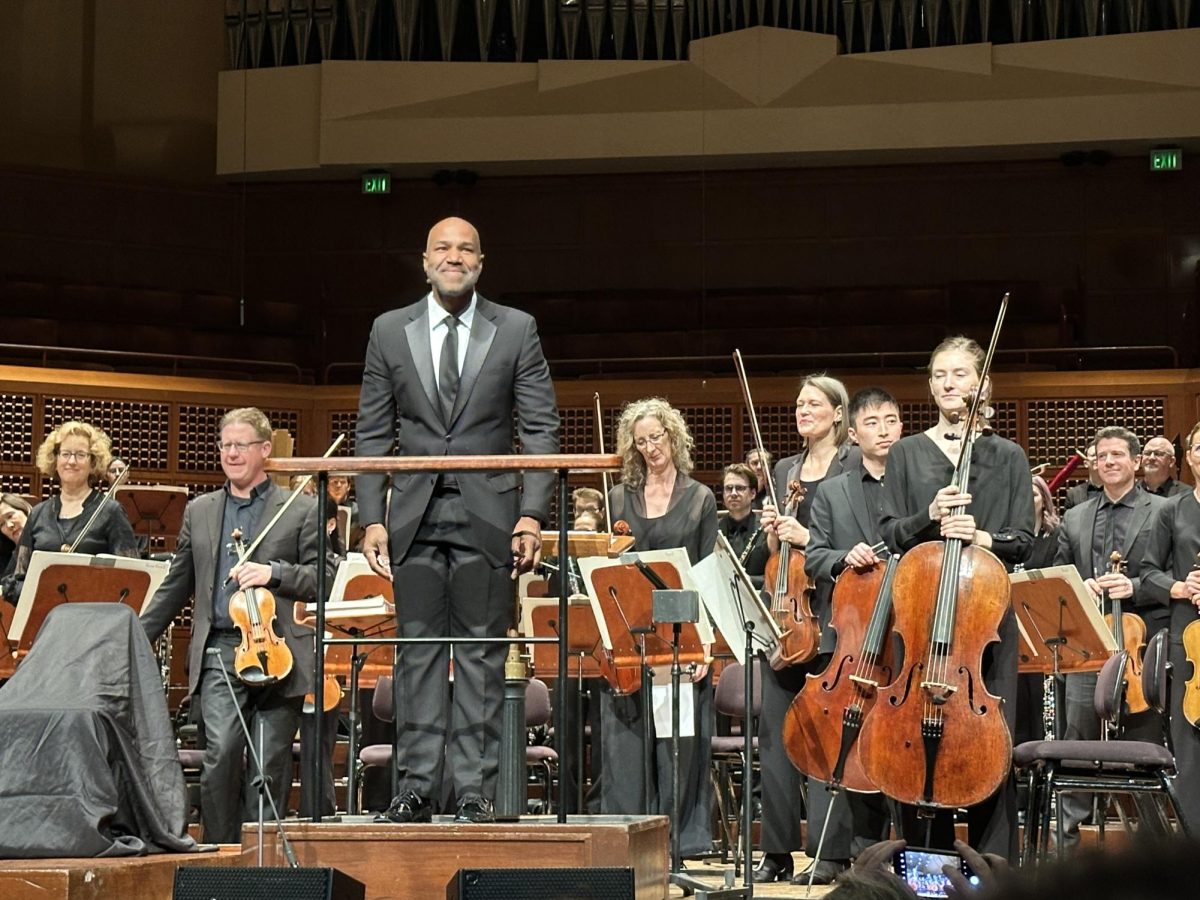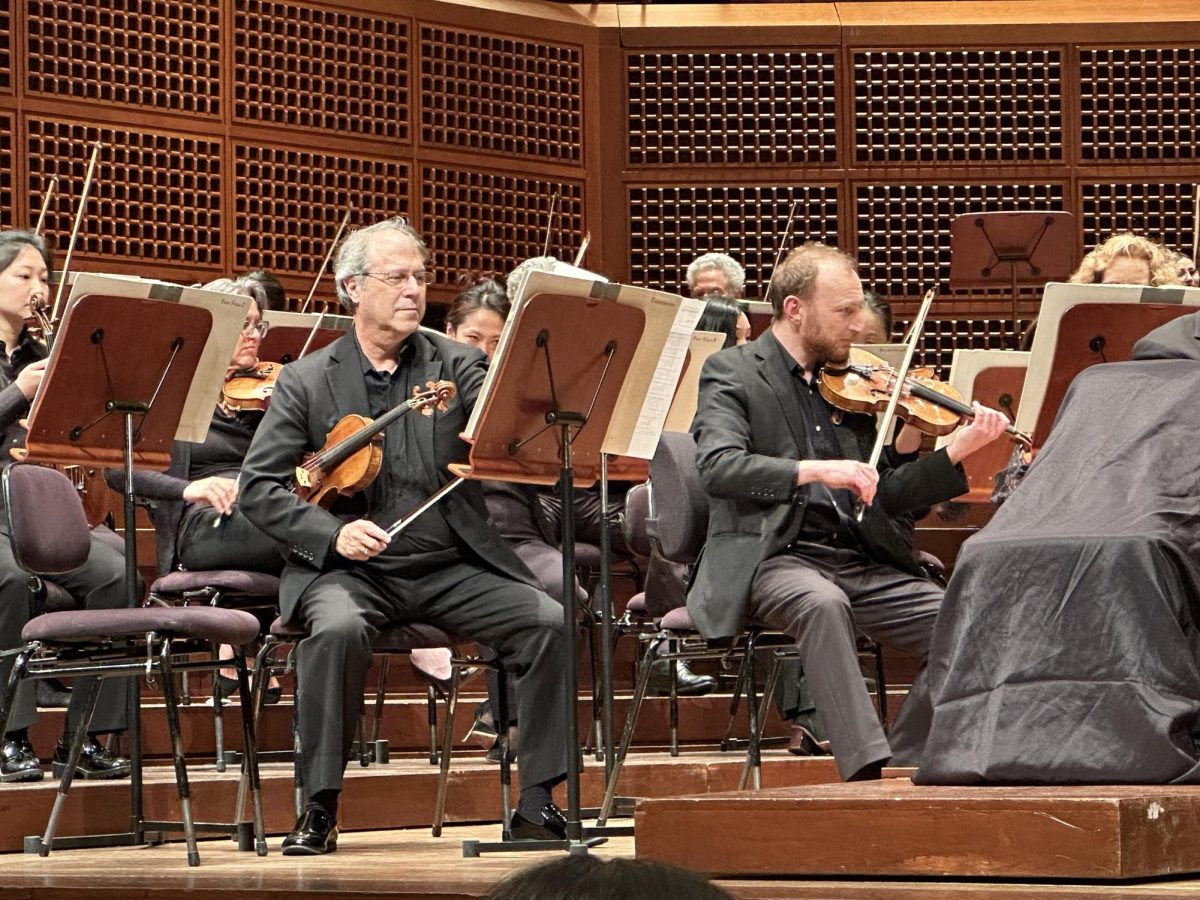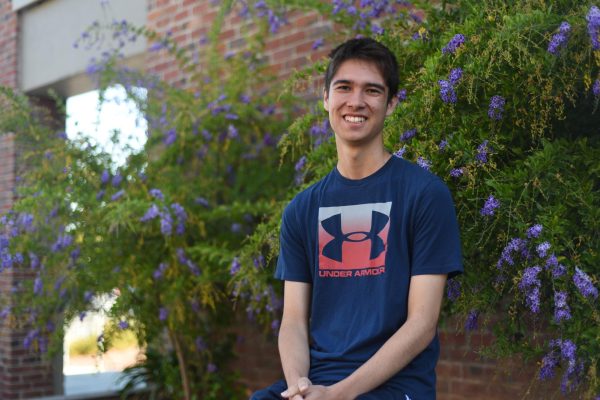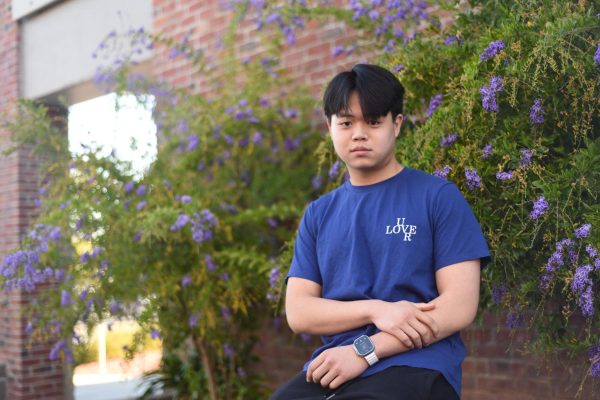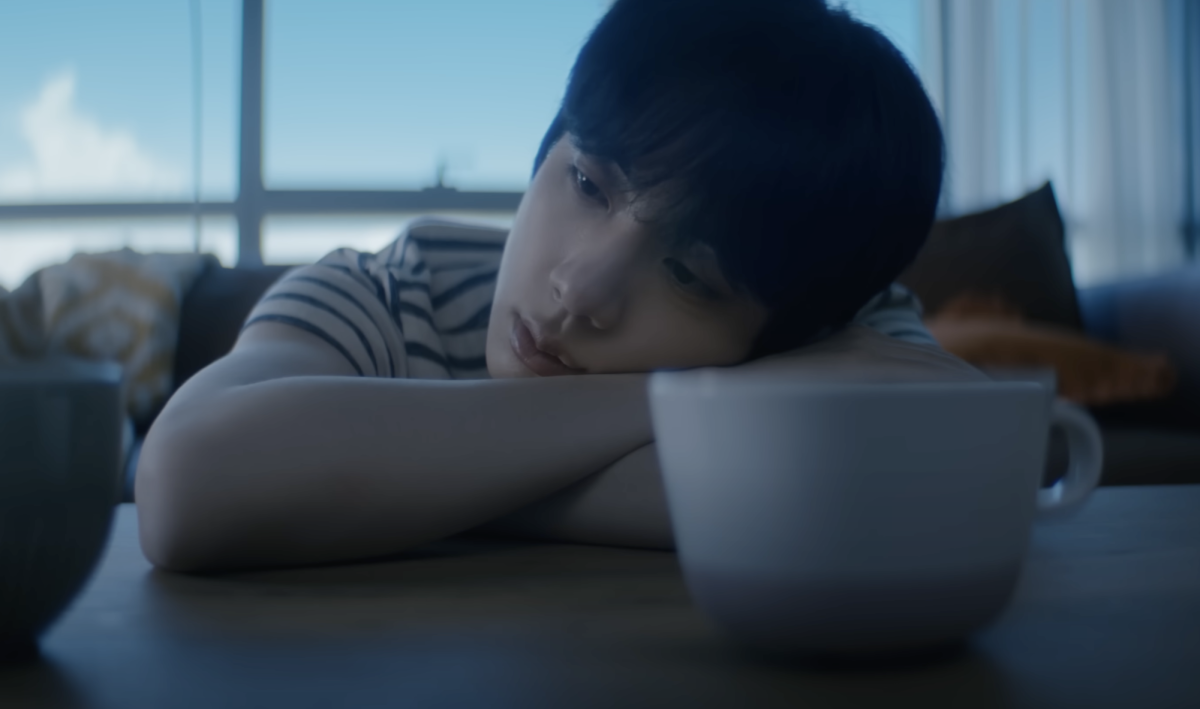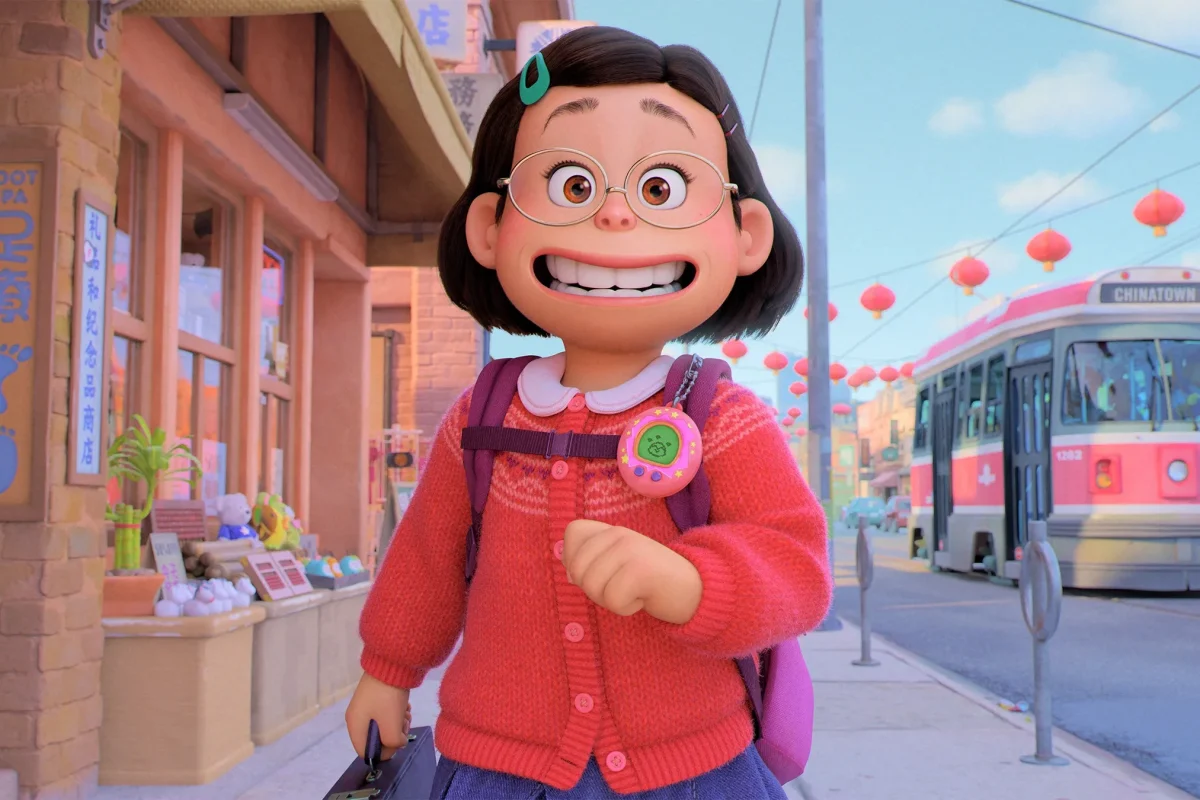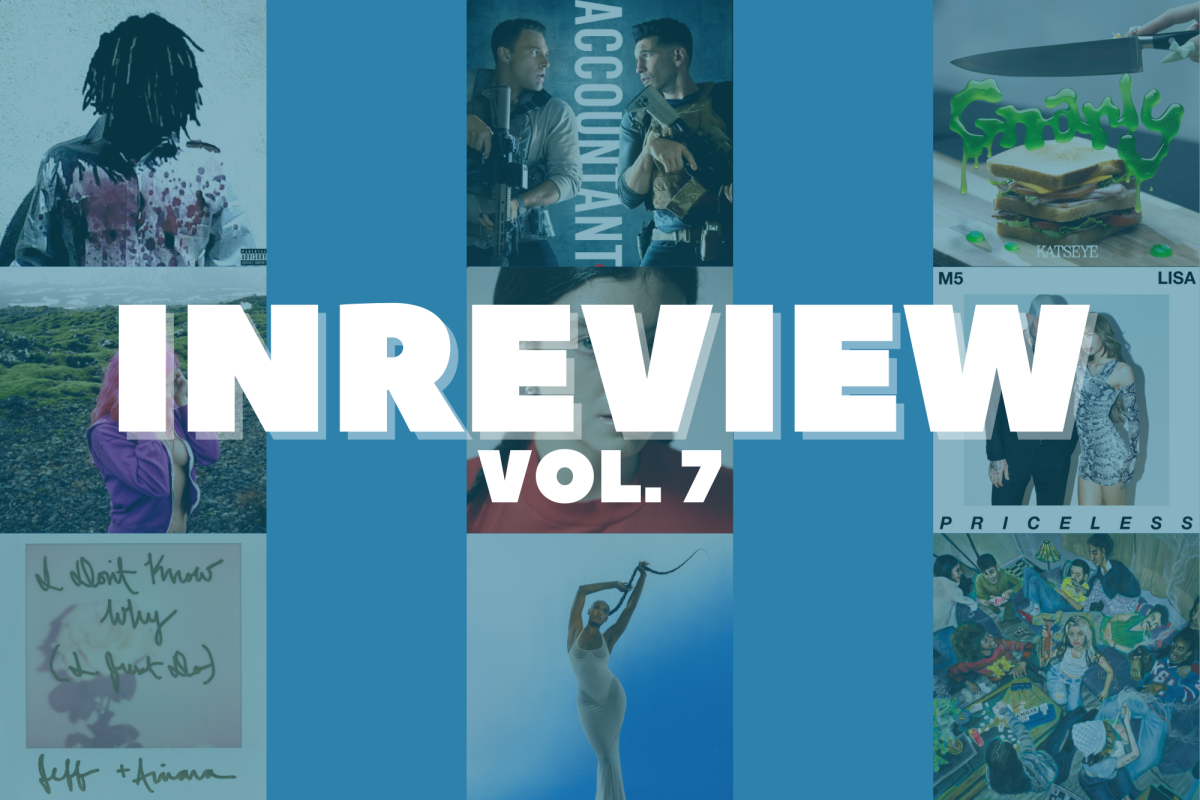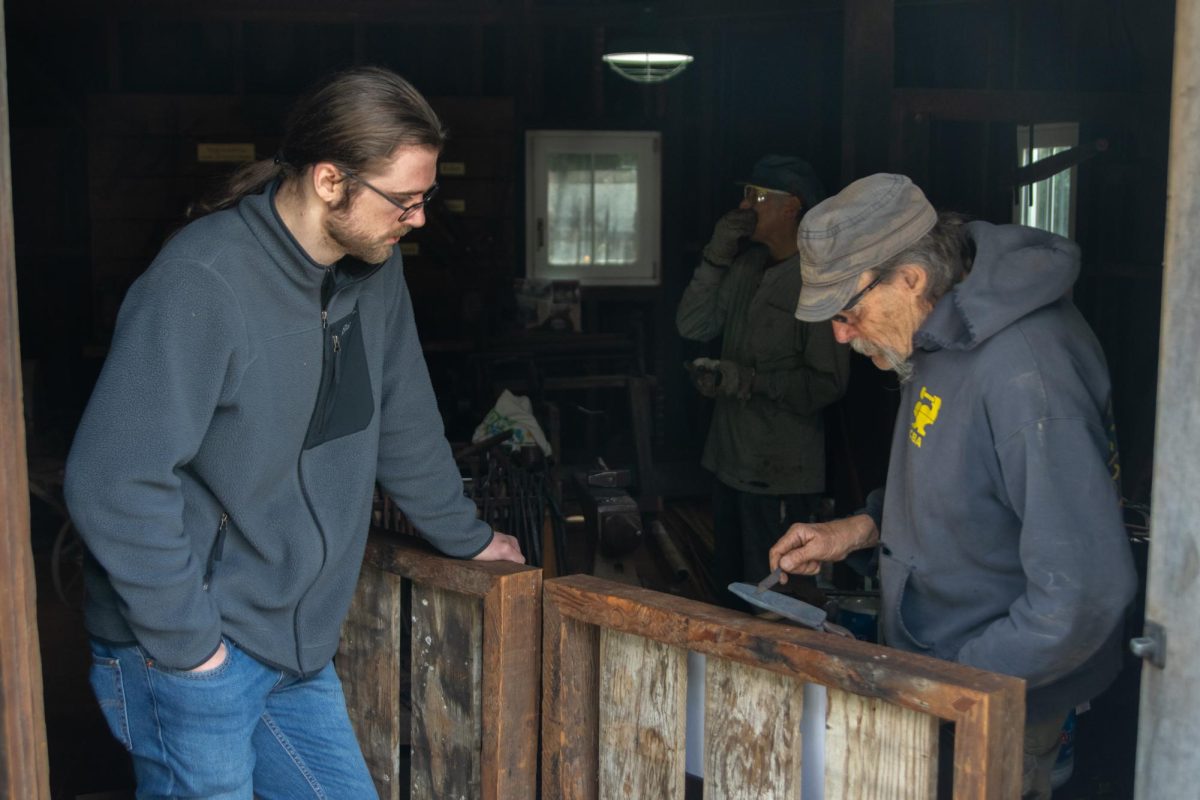The San Francisco Symphony commenced its fourth annual Teen Night conducted by Resident Conductor of Engagement and Education Daniel Bartholomew-Poyser on March 22. The concert was structured around a single piece, Dvořák’s “Symphony No. 8,” which Bartholomew-Poyser dissected by playing companion pieces to highlight the unique aspects of the symphony. The group opened with a well-executed rendition of Antonín Dvořák’s Slavonic Dance — its juxtaposition of fluid and bouncy motifs was articulated by the lightness of the strings and percussion.
Unlike a typical classical concert, Bartholomew-Poyser turned to the audience after the opening piece ended and started speaking from the conductor’s podium. Through the opening speech alone, Bartholomew-Poyser created a much more approachable and casual window into classical music. He explained that his goal for this concert was to highlight the aspects of Dvořák’s eighth symphony that made it unique, such as layering of different parts, scales, remixing themes and the use of the cello.
Subsequent pieces were also broken up by games and speeches from Bartholomew-Poyser, making the concert thoroughly engaging. For example, Bartholomew-Poyser invited audience members onto a hot seat on the stage and had them play various musical games, rewarding them with SFS merch and free tickets.
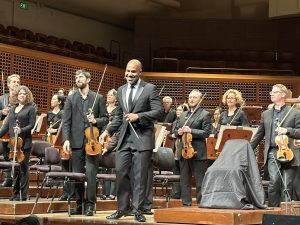
Bartholomew-Poyser first featured Dvořák’s layering of different parts of the orchestra by isolating parts of the third movement of Dvořák’s eighth symphony and then putting them all together. It was a very effective way to show the audience the different instrumental components of the piece. Thereafter, the game human metronome was introduced. An audience member was invited onto the hot seat on the conductor’s podium and had to keep a steady tempo as the conductor clapped at different tempos to throw them off. While interesting, the game only focused on the layering of rhythms.
The orchestra played Beethoven’s seventh symphony afterwards to highlight how composers combine multiple voices in the orchestra to create different textures. Bartholomew-Poyser used an analogy of a cake to represent the eight layers in the second movement of Beethoven’s seventh symphony, which helped show the audience how overlapping instruments interact. As the piece built up, more instruments were added until a climax with the full orchestra’s clear sound was present. As layering is used throughout Dvořák’s music, Beethoven’s seventh symphony complemented Dvořák’s eighth symphony well.
Bartholomew-Poyser then introduced scales with an excerpt from the second movement of Dvořák’s eighth symphony and the finale of Prokofiev’s first symphony, which are both based on scales. This time, the hot seat game was for audience members to identify major, minor and pentatonic scales, which were played gracefully by Acting Assistant Concertmaster of the SFS and violinist Wyatt Underhill.
Afterwards, Bartholomew-Poyser conducted the audience as they sang scales, but the directions for the audience were sometimes unclear. Afterwards, Bartholomew-Poyser conducted Tchaikovsky’s Pas de Deux, which was also an effective way of introducing the use of scales to the audience since its melody is a scale.
After the performance of Pas de Deux, Bartholomew-Poyser featured the cello, an instrument used throughout Dvořák’s eighth symphony by showcasing an excerpt from the first movement of the symphony, which features a prominent cello melody. Following that, SFS Principal cellist Rainer Eudeikis was brought onto the hot seat to perform the cello solo and orchestra arrangement of Edward Elgar’s “Salut d’amour” by David Cullen. Although the solo part was written in a less robust cello register, Eudeikis’s emphasis on every note’s vibrato and fluid bow strokes allowed his sound to project over the rest of the orchestra, producing a warm and expressive sound.
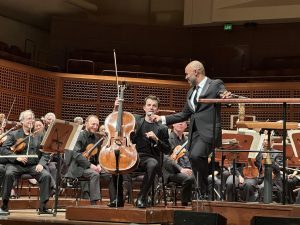
An important technique in classical music as well as Dvořák’s eighth symphony is the use of themes and variations. SFS played the chromatically descending melody from the fourth movement with the flutes, then again with the brass. They played Samuel Coleridge-Taylor’s “Ballade” as a companion piece to the fourth movement. Since both excerpts had a simple and catchy melody that varied throughout the piece, it was an excellent way to showcase how motifs were remixed in classical music.
Finally, the orchestra performed an amazing rendition of the full version of Dvořák’s eighth symphony. During subtle, quiet sections, the orchestra played extremely delicately, and the layers could be heard with pristine clarity. Not only was the intonation of the orchestra well-executed, but the overall performance of the piece was sublime. The rubatos felt characteristic for the piece and helped bring out the beauty of many sections, especially in the second movement’s violin solo, which Underhill played delicately. The louder sections were extremely energetic and never failed to hold the audience’s attention.
During the finale, as the main fanfare was played at full throttle, the excitement of the symphony reached a climax. Unexpectedly, trumpets and trombones pierced through the texture and played a quick downward scale. Altogether, the orchestra did a wonderful job of maintaining and even surpassing their energy.
Teen Night was a great experience for musicians and non-musicians alike. Although the performances were exciting and beautifully played, the educational aspect of the event could’ve been improved by going more in depth into how the melodic lines of the Dvořák interact. Additionally, the games could’ve been more engaging if more audience members were involved and there was additional guidance for singing.. Nevertheless, the overall programming and performance of the concert was well thought-out and performed with a high level of technicality and musicality, leaving a remarkable impression on audience members.
RATING: 4.5/5




